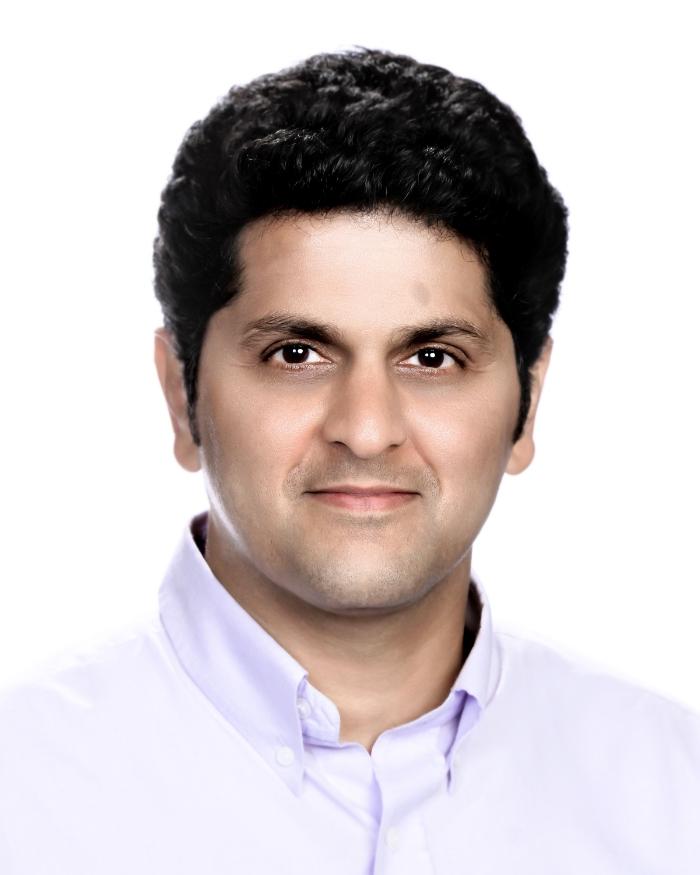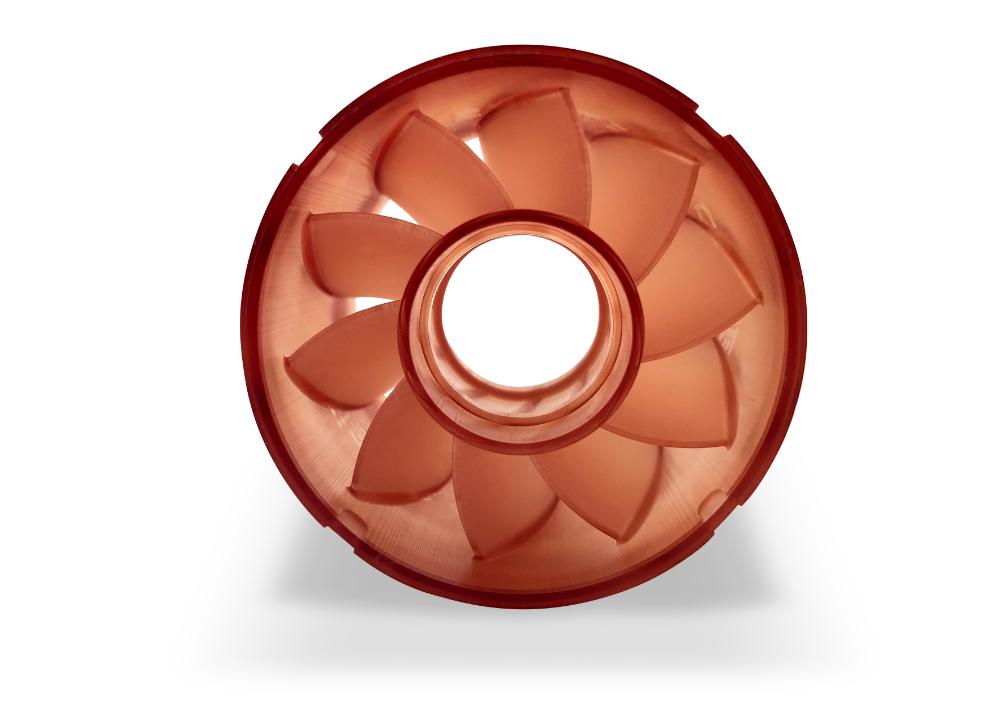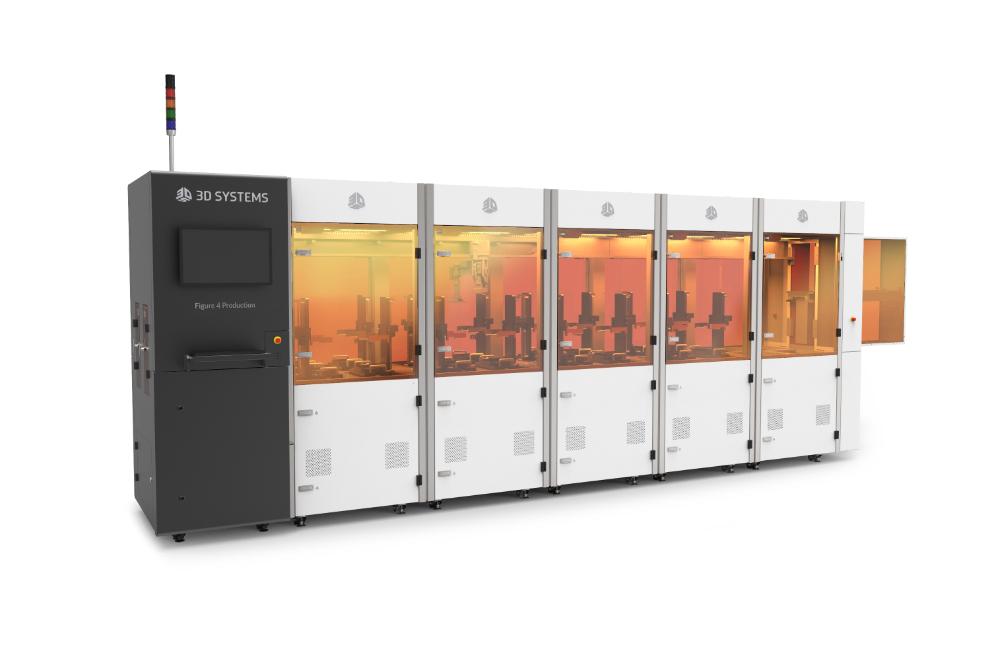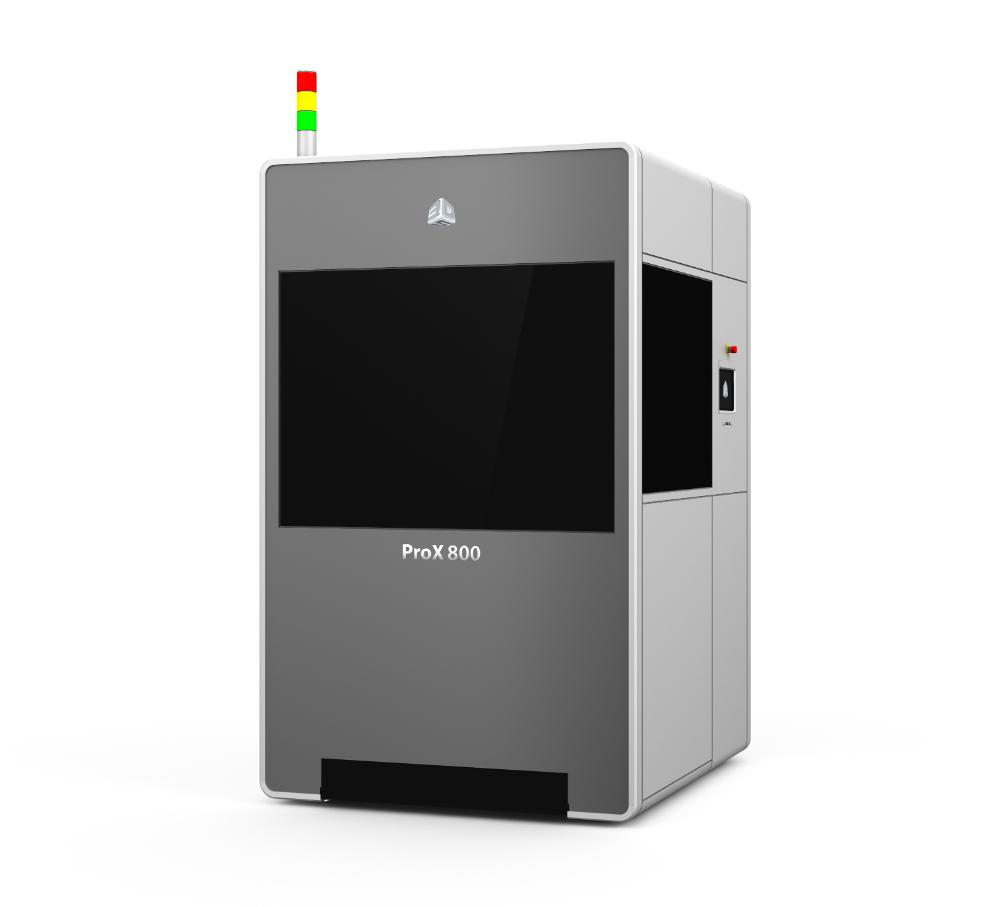Editor-in-Chief
- FMA
- The Fabricator
- FABTECH
- Canadian Metalworking
Our Publications
Categories
- Additive Manufacturing
- Aluminum Welding
- Arc Welding
- Assembly and Joining
- Automation and Robotics
- Bending and Forming
- Consumables
- Cutting and Weld Prep
- Electric Vehicles
- En Español
- Finishing
- Hydroforming
- Laser Cutting
- Laser Welding
- Machining
- Manufacturing Software
- Materials Handling
- Metals/Materials
- Oxyfuel Cutting
- Plasma Cutting
- Power Tools
- Punching and Other Holemaking
- Roll Forming
- Safety
- Sawing
- Shearing
- Shop Management
- Testing and Measuring
- Tube and Pipe Fabrication
- Tube and Pipe Production
- Waterjet Cutting
Industry Directory
Webcasts
Podcasts
FAB 40
Advertise
Subscribe
Account Login
Search
Interview with VP of strategy at additive manufacturing industry leader 3D Systems
3D Systems’ Rajeev Kulkarni talks about how AM has changed—and what still needs to change
- By Don Nelson
- August 28, 2020
- Article
- Additive Manufacturing

VP of Strategy Rajeev Kulkarni spent 15 of his 25 years at 3D Systems working in the engineering department. During those years, he said, the department secured hundreds of patents. Images: 3D Systems
Rajeev Kulkarni has been involved with additive manufacturing almost since the technology’s inception. He has spent 25 years at 3D Systems—the company cofounded by the inventor of 3D printing—working in engineering and R&D, software, and marketing. For the last 10 years, he’s served as vice president of strategy for the Rock Hill, S.C., company.
Kulkarni described joining 3D Systems as “a fantastic opportunity … to work directly with ‘the father of 3D printing,’ Chuck Hull. Being part of 3D printing and AM from its invention has been a remarkable and exciting chance to help shape the technology’s impact on a variety of markets.”
For approximately 15 years, he was a member of the engineering team charged with developing all the company’s 3D printing platforms. “As a team, we enhanced the capabilities of these platforms and, in the process, secured hundreds of patents,” said Kulkarni.
To learn more about changes that have occurred at 3D Systems and the AM industry in general, The Additive Report asked Kulkarni a series of questions. Following is an edited excerpt of his responses.
Additive Report: What has changed and what has stayed the same during your time at 3D Systems?
Rajeev Kulkarni: The focus has always been on bringing varying technology elements—hardware, software, materials, process expertise, imaging systems, monitoring systems—together to create crisp, application-specific solutions. In the beginning, the intent was to rapidly prototype plastic parts to greatly reduce time to market. This was achieved in part by reducing design cycles and facilitating rapid parts qualification.
Over the years, the focus has shifted to developing functional parts, end-use parts, and manufacturing aids. While the greatest opportunities lie within manufacturing, new emerging areas, like bioprinting, culinary, and construction, are also very exciting and inspiring.
AR: When we look at a mature manufacturing technology like the milling machine, which has been around for 200 years, there’s not a lot of room for major improvements. Where is AM in terms of being a fully evolved technology?
Kulkarni: Traditional manufacturing technologies have undergone an evolution, and even after 200 years, they are far from stagnant. Improvements in traditional technologies are being spurred by the adoption of the internet of things (IoT), software capabilities, process capabilities, real-time monitoring, data analytics, and hybrid systems.
As your question suggests, traditional technologies have a much more established base, with a century and a half lead on additive. Comparatively, additive manufacturing is still a relatively “young” technology and is still establishing its base. Across the additive industry, the focus is largely on materials, size of prints, accuracy, reliability, and repeatability. All these are still being mastered, and the industry has not plateaued on these fronts.
Surrounding all this is the need for standards for materials, processes, and software—work that is still in its infancy. Within this mix, the applications being pursued are so diverse that the needs are very different.
AR: What areas of AM technology are ripe for development? And what technology areas is 3D Systems focusing on?
Kulkarni: At the heart of AM is the need to bring together mechanical motion systems, software, materials, imaging systems, optics, thermal systems, design file formats, and process expertise to create a clean, crisp, usable, and functional part. Surrounding this core is the need for process and quality monitoring tools, integration with IoT and AI, and also the need for finishing or postprocessing the printed part.
And outside this printing process domain is the need for enhanced design tools that let designers harness the full value of AM through the use of organic shapes, conformal designs, generative designs, and multimaterial parts. Finally, based on the needs of each vertical market—aerospace, health care, automotive—standards are required that govern all these discrete technical elements.
Currently within the AM industry, each organization is pursuing its independent path, and there is minimal work being done to harmonize the standards, terms, and communication channels. As an industry, this is where we need the most work and focus.
3D Systems specifically is focused on developing additive manufacturing solutions to address applications within aerospace, health care, and automotive. These solutions involve digitization of data, parts-building support, customized technology development based on application needs, custom materials, and supporting these with application and business expertise.
Chuck Hull founded this company on “customer-centric” innovation, and we continue our focus of deep partnership with the customer to develop solutions that will address their unique requirements.
AR: Why isn’t AM more automated?
Kulkarni: AM is still a multistep process. It starts with part prep using software tools, followed by manufacturing then postprocessing to clean supports and other build elements. Then other secondary processes, such as finishing and painting, are performed.
The process from part prep to postprocessing has been automated on several metal and plastic platforms. For example, [3D Systems’] Figure 4 Production fully automates the process from data prep to support cleaning, which is achieved through the integration of manufacturing and robotics.

Materials like the Figure 4 HI TEMP 300-AMB plastic have increased applications for additive manufacturing.
But even with a solution like Figure 4, there is still a great deal of room to further automate AM in general. The majority of the R&D funds across the industry are still spent on improving the output by making it more reliable and repeatable, larger, and more accurate. There is also significant investment in material development. I believe enhanced automation will happen once certain key thresholds around these fundamental needs of materials, accuracy, and reliability are achieved.
AR: Can 3D printing be a sustainable/green technology?
Kulkarni: Yes, 3D printing can support green initiatives directly and indirectly. The benefits are clear. 3D printing allows:
• The use of less material than traditional machining, which tends to create extensive subtractive waste.
• Users to “manufacture at the point of demand,” which reduces the transport footprint of finished goods.
• Just-in-time production so there is no need to create excessive inventory and store it.
• Consolidating of assemblies so that multiple parts are combined into a single print. As such, there are great savings in energy usage for assembly and testing of multiple small parts.
• Production of parts made of plastic and metal, both of which are recyclable, in most cases.
• Creation of lighter and conformal designs that increase the operational efficiencies of airplanes and automobiles and, in turn, lower fuel consumption.
• Potential to use 100% biodegradable and renewable plant-based materials, as it is much easier to tailor the printing process to these materials.

When asked about the lack of automation in AM, Kulkarni mentioned 3D Systems’ Figure 4 Production system, which automates the AM process through the integration of hardware, software, and robotics.
AR: There was a lot of talk in 2015 about AM failing to fulfill its promise. The last couple years, though, there’s been an uptick in enthusiasm. Why?
Kulkarni: Several factors are contributing to this revival and growth. First and foremost, the industry has learned that 3D printing and additive manufacturing are not the same. 3D printing is a technology that has a place among educators, hobbyists, and garage entrepreneurs. Additive manufacturing, which relies on 3D printing as a core piece of the entire solution, is slowly penetrating the industrial manufacturing floor and transforming how products are produced.
The integration of AM into manufacturing floors is supported by several factors:
• Material portfolios and capabilities have increased. Several functional materials have been invented, along with composites and fill materials. Because of these materials innovations, it’s now possible to additively manufacture end-use parts, and the number of available materials is increasing by the day.
• The focus of AM has shifted heavily from plastics to metals. This is partly due to innovation, and partly due to the traditional machine tool companies that are entering the industry, thus increasing the number of options.
• Design tool innovation is catching up with the innovation in other parts of the AM solution portfolio. For example, regenerative design has carved out a new software niche.
• Process monitoring tools and capabilities have improved significantly in the last five years. AI and IoT capabilities are now part of the AM solution.
• On the plastics side, DLP (digital light processing) has opened up high-speed manufacturing capabilities, while on the metals side, the ability to print large parts and automation is fueling adoption.
• Finally, the new machine tool and 2D printing entrants into the market have deep pockets and are making everybody innovate faster, leading to reduced cycle times between new capability launches.
AR: What was the company’s strategy for going to market before the onset of COVID-19 and after the pandemic erupted?
Kulkarni: When Chuck Hull founded 3D Systems, it was done so in a spirit of curiosity and customer-centric innovation. This remains at the core of our business today. Our strategy hasn’t changed—we still provide solutions to our customers’ business challenges. What has changed over time is how we’re able to apply what 3D Systems offers to our customers’ businesses.
3D printing has moved from a technology created for prototyping to one that now accelerates the product development cycle by allowing the same technology to be used not only for prototypes but end-use parts. 3D Systems’ innovation in materials science and the expertise of our applications engineers have been instrumental in making that transition.
(Note: In a press release 3D Systems issued Aug. 5, the company reported that its Q2 2020 revenue was down 28.7%, compared to the same period in 2019. The drop was due primarily to the COVID-19 pandemic, the release states. In response, the company plans to restructure, focusing on two market verticals and reducing its workforce nearly 20% by year’s end. It expects the actions to lower operating costs $100 million annually. In a follow-up question about the Aug. 5 release, Kulkarni responded, “3D Systems is restructuring to focus squarely on two customer verticals: industrial and health care. To streamline operations based on this focus, it was important to restructure the organization.”—Ed.)
AR: AM accounts for about $10 billion of the $13 trillion global manufacturing industry. What are three actions the industry needs to take to grow its share?
Kulkarni: AM has unique value propositions to elevate the overall value of manufacturing … not necessarily replace traditional manufacturing. It essentially helps designers design for form without sacrificing function. It seamlessly blends the two together. Although to realize this promise for applications that involve replacing traditional processes, the industry needs to:
1. Develop AM processes that use already-qualified materials so as to accelerate adoption, and develop new materials to enable newer applications and capabilities.
2. Make the printing process repeatable so that the millionth part is the same as the first one.
3. Make the printing process more reliable such that yields match those of traditional processes.
About the Author

Don Nelson
2135 Point Blvd.
Elgin, IL 60123
(815)-227-8248
About the Publication
- Podcasting
- Podcast:
- The Fabricator Podcast
- Published:
- 04/16/2024
- Running Time:
- 63:29
In this episode of The Fabricator Podcast, Caleb Chamberlain, co-founder and CEO of OSH Cut, discusses his company’s...
- Trending Articles
- Industry Events
16th Annual Safety Conference
- April 30 - May 1, 2024
- Elgin,
Pipe and Tube Conference
- May 21 - 22, 2024
- Omaha, NE
World-Class Roll Forming Workshop
- June 5 - 6, 2024
- Louisville, KY
Advanced Laser Application Workshop
- June 25 - 27, 2024
- Novi, MI



























